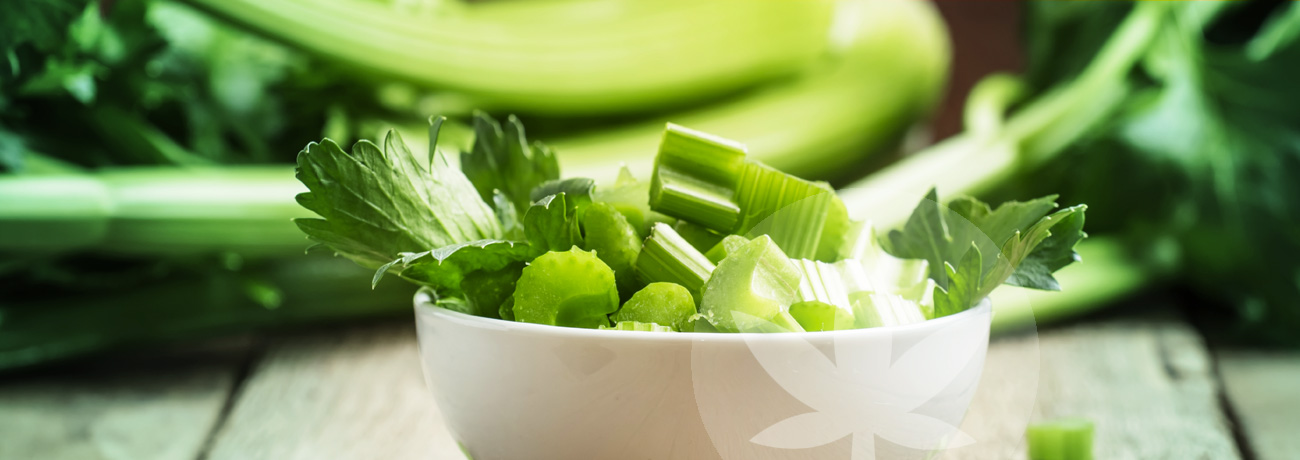What are flavonoids?
What are flavonoids?

Flavonoids form a small part of all phytochemicals in the hemp plant. But this does not make them any less important. Read on and discover all about these colorful connections.
Content:
- What do flavonoids do?
- Where do you find flavonoids?
- How do flavonoids work?
- Are flavonoids good for you?
- Why are flavonoids important?
What do flavonoids do?
What strikes you first while visiting the fruit and vegetable section in the supermarket? Probably the countless colors! Think red peppers, oranges, blueberries and onions. All fruits and vegetables owe these vibrant colors to flavonoids.
Flavonoids are small phytonutrients. They are found in the skin and outer layers of fruits, vegetables and plants. Each color represents a different flavonoid. Their function is to attract pollinating insects, protect against diseases and filter UV light.
But flavonoids not only protect plants and food. Scientists have found that flavonoids also act as natural antioxidants after human consumption. Before we delve a little deeper into the possible effects of flavonoids on the human body, it’s helpful if you know where to find them.
Where do you find flavonoids?
For starters, the term flavonoids is an umbrella term for four groups: flavonoids, isoflavonoids, neoflavonoids and anthocyanins. However, because of its simplicity, the term flavonoids is the most commonly used term. The only notable distinction is that certain flavonoids exist exclusively in Cannabis sativa species. These are cannflavins. More on this later.
So there are over 6,000 flavonoids that we divide into four different categories. Does the thought make you dizzy? No worries. Researchers (recently) have focused mainly on the groups in isolation.
For now, it suffices to focus on the most prominent flavonoids. Many of these are found in foods, beverages and plants.
Examples of flavonoids
– Apigenin
More than 68% of the total flavonoids in chamomile plants consist of apigenin. Other well-known sources are parsley, celery and, of course, chamomile tea.
– Cannflavin A, B and C
As mentioned, cannflavins belong to a special class of flavonoids found exclusively in Cannabis sativa. Cannflavins A and B were discovered in the 1980s; cannflavin C was not isolated until 2008.
– Kaempferol
This name does not immediately ring a bell, but you consume it regularly! Kaempferol can be found in apples, grapes, green tea, Brussels sprouts and the Aloe Vera plant.
– Quercetin
This compound is present in vegetables, grains and red onions. However, the bitter taste of quercetin also makes it a popular addition in dietary supplements and drinks.

How do flavonoids work?
It is impossible to say with certainty how flavonoids interact with the human body and to what extent. In fact, there are over 6,000 different flavonoids. And then there is the entourage effect. This is a powerful phenomenon in which synergy occurs between cannabis compounds for enhanced effects. The larger the molecule, the more powerful this effect is. Therefore, cannabinoids and terpenes are considered the main players within the entourage effect.
But flavonoids are just as important in maintaining this chemical synergy. Flavonoids are potentially important for your overall well-being. And because flavonoids are non-toxic, there is no harm in adding them to your wellness regime.
Are flavonoids good for you?
Let’s say that flavonoids are certainly not bad for you. They occur naturally in vegetables and fruits. These products are important for a healthy lifestyle. Several studies point to a positive relationship between flavonoid consumption and various aspects of well-being.
Exactly how “healthy” they are is still under investigation. However, we do know that flavonoids appear to be powerful antioxidants.
In 2016, the Journal of Nutritional Science published a comprehensive review on flavonoids. In this report, we read, “flavonoids are considered an indispensable ingredient in numerous pharmaceutical, medical and cosmetic applications.” Flavonoids affect important parts of human physiology. Therefore, scientists predict that flavonoids may have medicinal potential in the prevention of chronic diseases. However, they also recognize that more research is needed to determine true potency.
Why are flavonoids important?
Let’s face it; a world without color is a very boring place. But plants and foods without flavonoids are possibly even more disastrous. They are not only indispensable for the entourage effect, but are also powerful allies against oxidation.
Fortunately, studies are underway to identify the different characteristics of flavonoids. Of the above flavonoids, we already know more about their possible influence on the human body. But the number of flavonoids is numerous. So there is still much to learn and discover. With that in mind, we hope this brief explanation is helpful. It shows the importance of receiving these organic compounds through your diet (and full-spectrum CBD oils).
Want to experience the power of the entourage effect for yourself? Surf to ByHemp’s webshop. Here you will find a wide range of full-spectrum CBD oils, capsules and supplements.